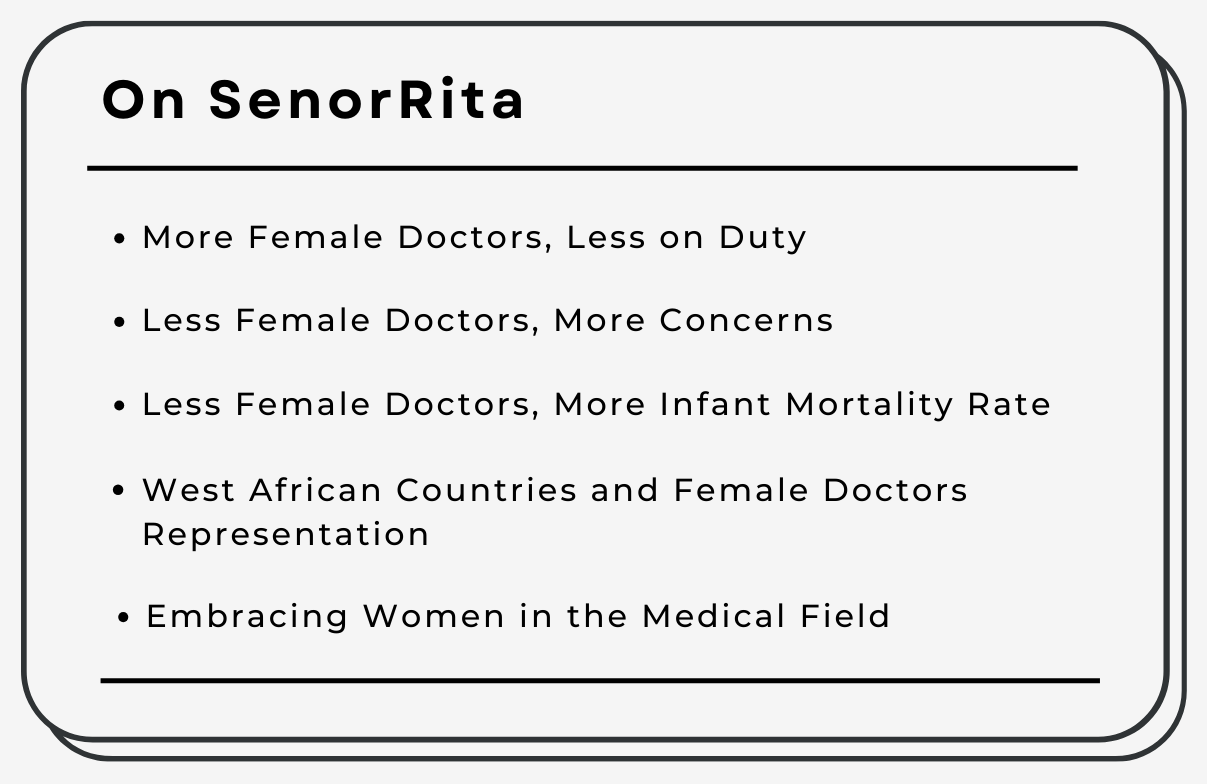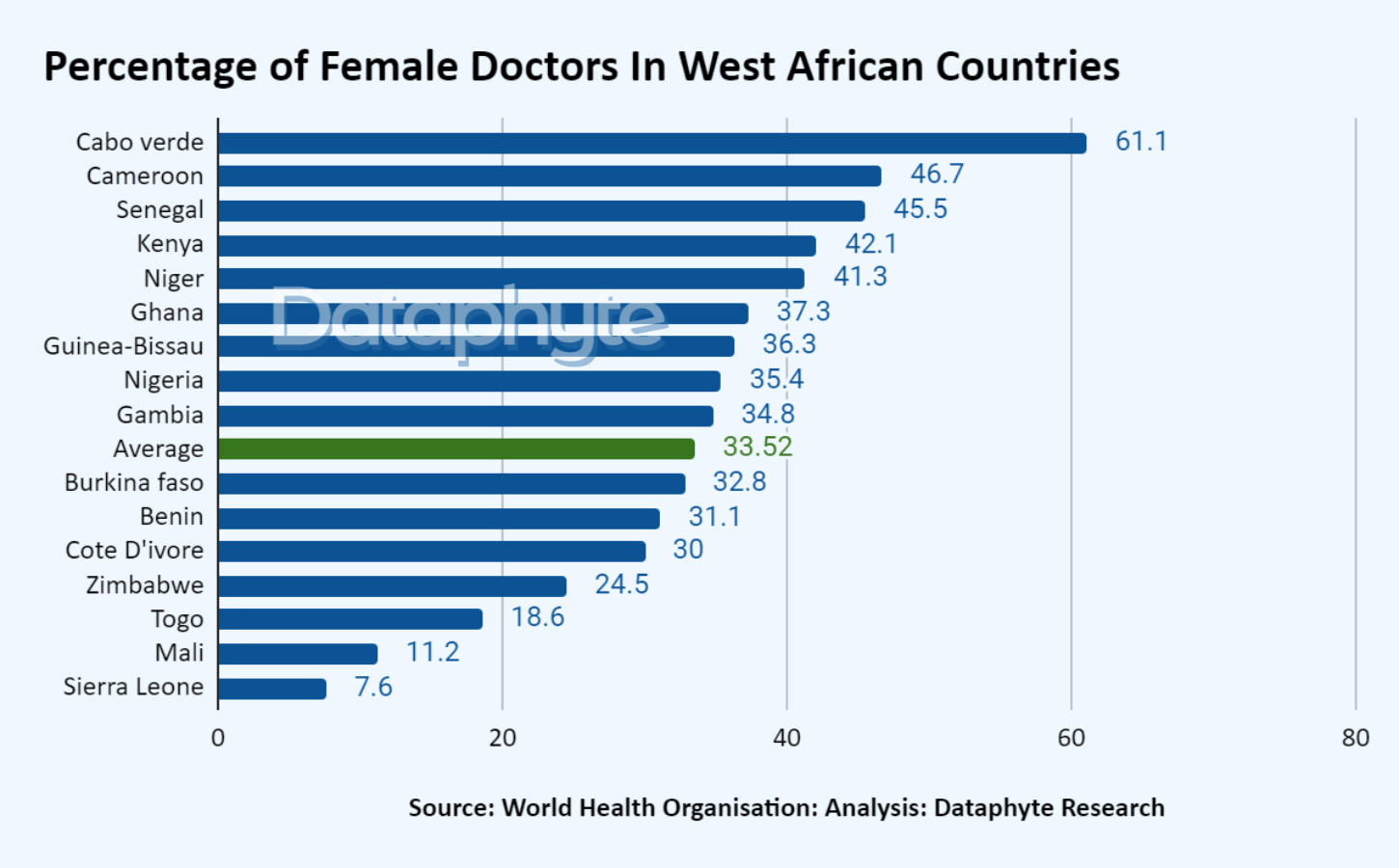More Female Doctors, Less on Duty
Seven in every 20 medical doctors in Nigeria are females, according to the National Bureau of Statistics (NBS) 2023 Social Statistics Report.
People adduce several reasons for this wide gender gap in medical practice.
A study has shown that there is an increasing number of women joining the medical profession in Nigeria, but they are often faced with cultural beliefs and marital roles that prevent them from practising fully.
Trend data shows female doctors have always been fewer than the males. Yet both genders have recorded increases in their numbers over the years.
Yet, the male doctors have increased faster than the females, recent data from the Social Statistics Report shows.
While the number of female doctors have increased through the years, their proportion in the whole has reduced, the NBS data shows.
The proportion of male doctors increased from 63% in 2021 to 65% in 2022, but for females, their proportion decreased from 37% in 2021 to 35% in 2022.
Less Female Doctors, More Concerns
Only 4 of Nigeria’s 36 states and the FCT have a proportion of female doctors’ above the national average.
The states with the highest percentage of female doctors are the FCT, Lagos, Rivers, and Oyo States. Other states are below average.
The concern is more significant in the Northern states which record the lowest percentage of female medical doctors compared to other states.
This is because there is preference for female doctors to treat female patients in the Northern parts of the country.
Cases of male doctors attending to female patients in the Northern parts of Nigeria has resulted in divorce incidents among some couples.
PUNCH also reported on men who prevent their wives from receiving healthcare services from male doctors and other male paramedics.
“We (male medical personnel) are no longer attending to pregnant women in labour unless we get the written agreement from their husbands or relations. There are so many incidents where pregnant women who are in labour were attended to by male doctors and the issue became unpleasant in the end.
“You know that we have shortage of female doctors, as such, male doctors must be assigned to attend to female patients, especially those in labour” a medic, Mohammed Sanni, said, according to the Punch report.
Less Female Doctors, More Infant Mortality Rate
Further analysis revealed that infant mortality is higher in states with lower proportion of female doctors, especially the northern states. This scenario is expected in related health outcomes such as maternal mortality.
The World Health Organization (WHO) defines Infant mortality rate as the probability of a child born in a specific year or period dying before reaching the age of one. It is the number of infant deaths for every 1,000 live births.
Nine of the top 10 states with the highest number of Infant mortality rate in Nigeria are in the Northern states while Rivers state is the only South-South state with a high infant mortality rate.
These states are Sokoto, Jigawa, Kebbi,Bauchi, Katsina, Kano, Rivers, Zamfara, Borno and Plateau states.
The same states are the ones with the lowest female doctor representation in Nigeria.
Among these northern states, some residents do not seek for health care services from male health care providers including the male doctors, insisting it is not part of their religious beliefs.
This could account for higher infant mortality rate and other poorer health outcomes.
West African Countries and Female Doctors Representation
Among West African countries, Cabo Verde, Cameroon, Senegal, Kenya, Niger, Ghana, Guinea-Bissau, Nigeria and Gambia are above average of 3,352 females in every 10,000 doctors.
Embracing Women in the Medical Field
A study has shown that women have many roles and positions in healthcare organisations, hospitals and healthcare education settings.
It says, ‘‘there has been an increase in the number of women, and female workers continue to face many workplace challenges. It (the research) demonstrated that some work related challenges impact negatively on the family.
‘‘This includes general quality of family life including happiness and family health. Therefore, the government and relevant institutions at all levels should revise policies that promote work family balance for the female worker. A culture of interactions and mentorship between the older and younger doctors; particularly female doctors.
‘’Also, women in the medical field often face discrimination while trying to progress in their career. There is an increasing number of women joining the medical profession and the expectations and challenges they face are unique to their profession and role as homemakers.’’
Research shows that In Nigeria, the female professional workforce is just beginning to increase due to improved awareness and opportunity. The reason why female doctors in this centre have these expectations may be due to their desire to add value to the profession, obtain better skills and to live comfortably.
Thanks for reading this edition of SenorRita. It was written by Kafilat Taiwo and edited by Oluseyi Olufemi.











